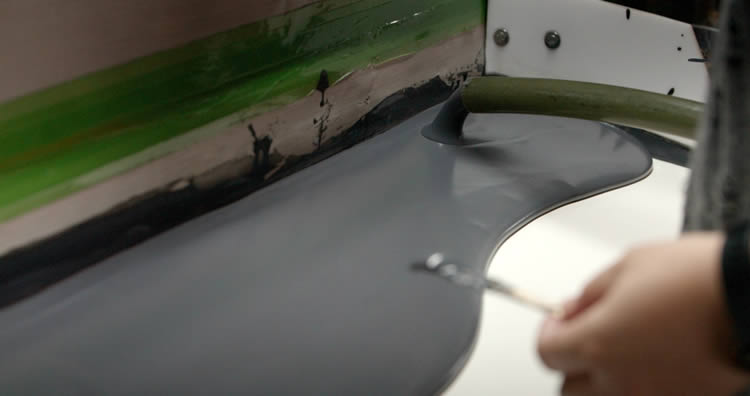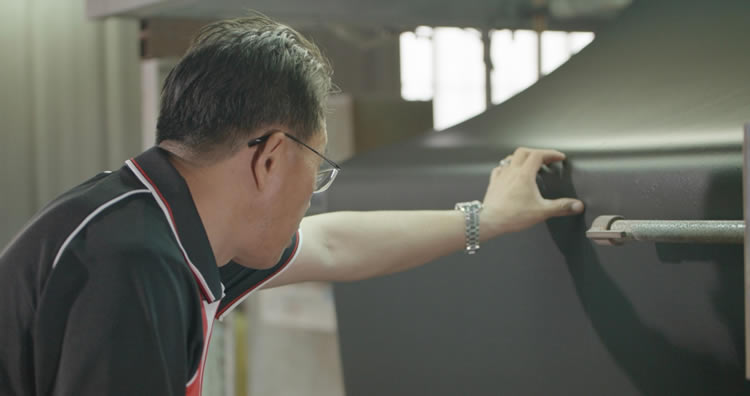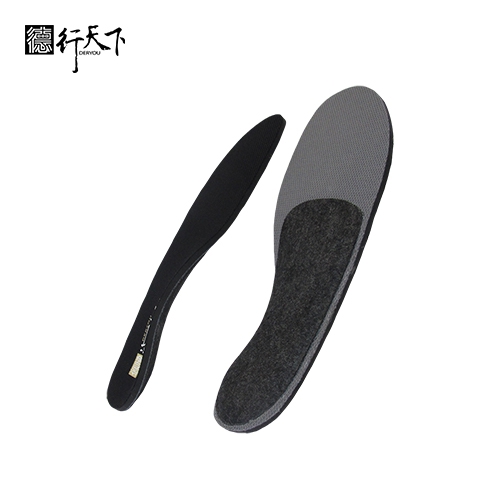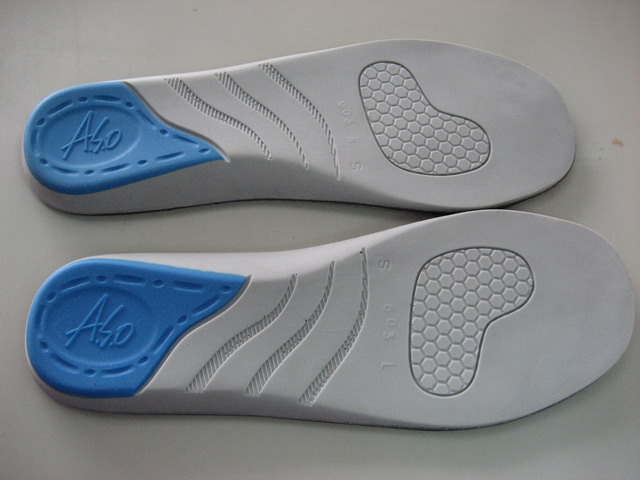
GuangXin Industrial Co., Ltd. is a specialized manufacturer dedicated to the development and production of high-quality insoles.
With a strong foundation in material science and footwear ergonomics, we serve as a trusted partner for global brands seeking reliable insole solutions that combine comfort, functionality, and design.
With years of experience in insole production and OEM/ODM services, GuangXin has successfully supported a wide range of clients across various industries—including sportswear, health & wellness, orthopedic care, and daily footwear.
From initial prototyping to mass production, we provide comprehensive support tailored to each client’s market and application needs.
At GuangXin, we are committed to quality, innovation, and sustainable development. Every insole we produce reflects our dedication to precision craftsmanship, forward-thinking design, and ESG-driven practices.
By integrating eco-friendly materials, clean production processes, and responsible sourcing, we help our partners meet both market demand and environmental goals.


At GuangXin Industrial, our core strength lies in our deep expertise and versatility in insole and pillow manufacturing. We specialize in working with a wide range of materials, including PU (polyurethane), natural latex, and advanced graphene composites, to develop insoles and pillows that meet diverse performance, comfort, and health-support needs.
Whether it's cushioning, support, breathability, or antibacterial function, we tailor material selection to the exact requirements of each project-whether for foot wellness or ergonomic sleep products.
We provide end-to-end manufacturing capabilities under one roof—covering every stage from material sourcing and foaming, to precision molding, lamination, cutting, sewing, and strict quality control. This full-process control not only ensures product consistency and durability, but also allows for faster lead times and better customization flexibility.
With our flexible production capacity, we accommodate both small batch custom orders and high-volume mass production with equal efficiency. Whether you're a startup launching your first insole or pillow line, or a global brand scaling up to meet market demand, GuangXin is equipped to deliver reliable OEM/ODM solutions that grow with your business.



GuangXin offers exceptional flexibility in customization and OEM/ODM services, empowering our partners to create insole products that truly align with their brand identity and target market. We develop insoles tailored to specific foot shapes, end-user needs, and regional market preferences, ensuring optimal fit and functionality.
Our team supports comprehensive branding solutions, including logo printing, custom packaging, and product integration support for marketing campaigns. Whether you're launching a new product line or upgrading an existing one, we help your vision come to life with attention to detail and consistent brand presentation.
With fast prototyping services and efficient lead times, GuangXin helps reduce your time-to-market and respond quickly to evolving trends or seasonal demands. From concept to final production, we offer agile support that keeps you ahead of the competition.
Quality is at the heart of everything we do. GuangXin implements a rigorous quality control system at every stage of production—ensuring that each insole meets the highest standards of consistency, comfort, and durability.
We provide a variety of in-house and third-party testing options, including antibacterial performance, odor control, durability testing, and eco-safety verification, to meet the specific needs of our clients and markets.
Our products are fully compliant with international safety and environmental standards, such as REACH, RoHS, and other applicable export regulations. This ensures seamless entry into global markets while supporting your ESG and product safety commitments.
At GuangXin Industrial, we are committed to integrating ESG (Environmental, Social, and Governance) values into every step of our manufacturing process. We actively pursue eco-conscious practices by utilizing eco-friendly materials and adopting low-carbon production methods to reduce environmental impact.
To support circular economy goals, we offer recycled and upcycled material options, including innovative applications such as recycled glass and repurposed LCD panel glass. These materials are processed using advanced techniques to retain performance while reducing waste—contributing to a more sustainable supply chain.
We also work closely with our partners to support their ESG compliance and sustainability reporting needs, providing documentation, traceability, and material data upon request. Whether you're aiming to meet corporate sustainability targets or align with global green regulations, GuangXin is your trusted manufacturing ally in building a better, greener future.
Looking for a reliable insole manufacturing partner that understands customization, quality, and flexibility? GuangXin Industrial Co., Ltd. specializes in high-performance insole production, offering tailored solutions for brands across the globe. Whether you're launching a new insole collection or expanding your existing product line, we provide OEM/ODM services built around your unique design and performance goals.
From small-batch custom orders to full-scale mass production, our flexible insole manufacturing capabilities adapt to your business needs. With expertise in PU, latex, and graphene insole materials, we turn ideas into functional, comfortable, and market-ready insoles that deliver value.
Contact us today to discuss your next insole project. Let GuangXin help you create custom insoles that stand out, perform better, and reflect your brand’s commitment to comfort, quality, and sustainability.
🔗 Learn more or get in touch:
🌐 Website: https://www.deryou-tw.com/
📧 Email: shela.a9119@msa.hinet.net
📘 Facebook: facebook.com/deryou.tw
📷 Instagram: instagram.com/deryou.tw
Taiwan OEM/ODM hybrid insole development factory
Are you looking for a trusted and experienced manufacturing partner that can bring your comfort-focused product ideas to life? GuangXin Industrial Co., Ltd. is your ideal OEM/ODM supplier, specializing in insole production, pillow manufacturing, and advanced graphene product design.
With decades of experience in insole OEM/ODM, we provide full-service manufacturing—from PU and latex to cutting-edge graphene-infused insoles—customized to meet your performance, support, and breathability requirements. Our production process is vertically integrated, covering everything from material sourcing and foaming to molding, cutting, and strict quality control.PU insole OEM production in Indonesia
Beyond insoles, GuangXin also offers pillow OEM/ODM services with a focus on ergonomic comfort and functional innovation. Whether you need memory foam, latex, or smart material integration for neck and sleep support, we deliver tailor-made solutions that reflect your brand’s values.
We are especially proud to lead the way in ESG-driven insole development. Through the use of recycled materials—such as repurposed LCD glass—and low-carbon production processes, we help our partners meet sustainability goals without compromising product quality. Our ESG insole solutions are designed not only for comfort but also for compliance with global environmental standards.Smart pillow ODM manufacturer China
At GuangXin, we don’t just manufacture products—we create long-term value for your brand. Whether you're developing your first product line or scaling up globally, our flexible production capabilities and collaborative approach will help you go further, faster.ODM service for ergonomic pillows Vietnam
📩 Contact us today to learn how our insole OEM, pillow ODM, and graphene product design services can elevate your product offering—while aligning with the sustainability expectations of modern consumers.Arch support insole OEM from Indonesia
The Technical University of Munich has successfully developed a “mini-heart” organoid using stem cells, providing a model that could enhance our understanding of heart development and diseases. The innovative organoid, consisting of both heart muscle cells and outer heart layer cells, enables the replication of patient-specific heart conditions and may reduce reliance on animal testing in future drug development. (Artist’s concept.) TUM scientists created mini-heart organoids to study heart development, disease, and regenerative medicine. Researchers at the Technical University of Munich (TUM) have successfully induced stem cells to mimic the process of human heart development, resulting in a “mini-heart” or organoid. This breakthrough will allow for a deeper understanding of the initial stages of heart development and will support research into heart-related diseases. The human heart begins to take shape roughly three weeks post-conception, often a period when many women still haven’t realized they’re pregnant. This factor contributes to our relatively limited knowledge regarding the intricate details of early heart formation. Insights gained from animal research are not entirely applicable to human beings, hence the significance of the organoid created by the TUM team to the scientific community. Various stages in the development of heart organoids (Epicardioids). Credit: Alessandra Moretti / TUM A Ball of 35,000 Cells The team working with Alessandra Moretti, Professor of Regenerative Medicine in Cardiovascular Disease, has developed a method for making a sort of “mini-heart” using pluripotent stem cells. Around 35,000 cells are spun into a sphere in a centrifuge. Over a period of several weeks, different signaling molecules are added to the cell culture under a fixed protocol. “In this way, we mimic the signaling pathways in the body that control the developmental program for the heart,” explains Alessandra Moretti. The group has now published its work in the journal Nature Biotechnology. First-Ever “Epicardioids” The resulting organoids are about half a millimeter in diameter. Although they do not pump blood, they can be stimulated electrically and are capable of contracting like human heart chambers. Prof. Moretti and her team are the first researchers in the world to successfully create an organoid containing both heart muscle cells (cardiomyocytes) and cells of the outer layer of the heart wall (epicardium). In the young history of heart organoids – the first were described in 2021 – researchers had previously created only organoids with cardiomyocytes and cells from the inner layer of the heart wall (endocardium). “To understand how the heart is formed, epicardium cells are decisive,” says Dr. Anna Meier, first author of the study. “Other cell types in the heart, for example in connecting tissues and blood vessels, are formed from these cells. The epicardium also plays a very important role in forming the heart chambers.” The team has appropriately named the new organoids “epicardioids.” Prof. Alessandra Moretti. Credit: Daniel Delang / TUM New Cell Type Discovered Along with the method for producing the organoids, the team has reported its first new discoveries. Through the analysis of individual cells, they have determined that precursor cells of a type only recently discovered in mice are formed around the seventh day of the development of the organoid. The epicardium is formed from these cells. “We assume that these cells also exist in the human body – if only for a few days,” says Prof. Moretti. These insights may also offer clues as to why the fetal heart can repair itself, a capability almost entirely absent in the heart of an adult human. This knowledge could help to find new treatment methods for heart attacks and other conditions. Producing “Personalized Organoids” The team also showed that the organoids can be used to investigate the illnesses of individual patients. Using pluripotent stem cells from a patient suffering from Noonan syndrome, the researchers produced organoids that emulated characteristics of the condition in a Petri dish. Over the coming months, the team plans to use comparable personalized organoids to investigate other congenital heart defects. With the possibility of emulating heart conditions in organoids, drugs could be tested directly on them in the future. “It is conceivable that such tests could reduce the need for animal experiments when developing drugs,” says Alessandra Moretti. Organoid Research Is a Key Research Area at TUM The researchers have registered an international patent for the process of creating heart organoids. The Epicardioid model is one of several organoid projects at TUM. At the Center for Organoid Systems, work groups from various departments and chairs will collaborate. They will conduct interdisciplinary research into pancreas, brain, and heart organoids with state-of-the-art imaging and cellular analysis to study the formation of organs, cancer, and neurodegenerative diseases and achieve progress for medicine with human 3D systems. Reference: “Epicardioid single-cell genomics uncovers principles of human epicardium biology in heart development and disease” by Anna B. Meier, Dorota Zawada, Maria Teresa De Angelis, Laura D. Martens, Gianluca Santamaria, Sophie Zengerle, Monika Nowak-Imialek, Jessica Kornherr, Fangfang Zhang, Qinghai Tian, Cordula M. Wolf, Christian Kupatt, Makoto Sahara, Peter Lipp, Fabian J. Theis, Julien Gagneur, Alexander Goedel, Karl-Ludwig Laugwitz, Tatjana Dorn and Alessandra Moretti, 3 April 2023, Nature Biotechnology. DOI: 10.1038/s41587-023-01718-7 The study was funded by the European Research Council.
Artist’s imagination of two primordial eukaryotic organisms of the ‘Protosterol Biota’ on the ocean floor. Based on molecular fossils, organisms of the Protosterol Biota lived in the oceans about 1.6 to 1.0 billion years ago and are our earliest known ancestors. Credit: Orchestrated in MidJourney by TA 2023 Researchers have discovered 1.6 billion-year-old eukaryotic organisms, the Protosterol Biota, believed to be Earth’s first predators. These ancient creatures, found through fossil fat molecules in ancient rocks, were more complex than bacteria, predating and likely shaping early marine ecosystems. This discovery challenges previous theories of a predominantly bacterial ancient ocean. The discovery of a “lost world” of ancient organisms that lived in Earth’s waterways at least 1.6 billion years ago could change our understanding of our earliest ancestors. Known as the ‘Protosterol Biota’, these microscopic creatures are part of a family of organisms called eukaryotes. Eukaryotes have a complex cell structure that includes mitochondria, known as the “powerhouse” of the cell, and a nucleus that acts as the “control and information center.” Modern forms of eukaryotes that inhabit Earth today include fungi, plants, animals, and single-celled organisms such as amoebae. Humans and all other nucleated creatures can trace their ancestral lineage back to the Last Eukaryotic Common Ancestor (LECA). LECA lived more than 1.2 billion years ago. The discovery of the Protosterol Biota, published in Nature, was made by researchers from The Australian National University (ANU). According to the researchers, these organisms could have been the first predators on Earth. Ancient Predators That Shaped Marine Ecosystems These ancient creatures were abundant in marine ecosystems across the world and probably shaped ecosystems for much of Earth’s history. The researchers say the Protosterol Biota lived at least one billion years before any animal or plant emerged. “Molecular remains of the Protosterol Biota detected in 1.6-billion-year-old rocks appear to be the oldest remnants of our own lineage – they lived even before LECA. These ancient creatures were abundant in marine ecosystems across the world and probably shaped ecosystems for much of Earth’s history,” Dr. Benjamin Nettersheim, who completed his PhD at ANU and is now based at the University of Bremen in Germany, said. “Modern forms of eukaryotes are so powerful and dominant today that researchers thought they should have conquered the ancient oceans on Earth more than a billion years ago. “Scientists have long searched for fossilized evidence of these early eukaryotes, but their physical remains are extremely scarce. Earth’s ancient oceans rather appeared to be largely a bacterial broth. “One of the greatest puzzles of early evolution scientists have been trying to answer is: why didn’t our highly capable eukaryotic ancestors come to dominate the world’s ancient waterways? Where were they hiding? “Our study flips this theory on its head. We show that the Protosterol Biota were hiding in plain sight and were in fact abundant in the world’s ancient oceans and lakes all along. Scientists just didn’t know how to look for them – until now.” Protosterol Biota in Evolution Professor Jochen Brocks from ANU, who made the discovery with Dr. Nettersheim, said the Protosterol Biota were certainly more complex than bacteria and presumably larger, although it’s unknown what they looked like. “We believe they may have been the first predators on Earth, hunting and devouring bacteria,” Professor Brocks said. According to Professor Brocks, these creatures thrived from about 1.6 billion years ago up until about 800 million years ago. The end of this period in Earth’s evolutionary timeline is known as the ‘Tonian Transformation’, when more advanced nucleated organisms, such as fungi and algae, started to flourish. But exactly when the Protosterol Biota went extinct is unknown. “The Tonian Transformation is one of the most profound ecological turning points in our planet’s history,” Professor Brocks said. “Just as the dinosaurs had to go extinct so that our mammal ancestors could become large and abundant, perhaps the Protosterol Biota had to disappear a billion years earlier to make space for modern eukaryotes.” To make the discovery, the researchers studied fossil fat molecules found inside a 1.6-billion-year-old rock that had formed at the bottom of the ocean near what is now Australia’s Northern Territory. The molecules possessed a primordial chemical structure that hinted at the existence of early complex creatures that evolved before LECA and had since gone extinct. “Without these molecules, we would never have known that the Protosterol Biota existed. Early oceans largely appeared to be a bacterial world, but our new discovery shows that this probably wasn’t the case,” Dr. Nettersheim said. Professor Brocks said: “Scientists had overlooked these molecules for four decades because they do not conform to typical molecular search images.” “But once we knew what we were looking for, we discovered that dozens of other rocks, taken from billion-year-old waterways across the world, were also oozing with similar fossil molecules.” For more on this research: Scientists Discover “Lost World” of Our Early Ancestors in Billion-Year-Old Rocks Reference: “Lost world of complex life and the late rise of the eukaryotic crown” by Jochen J. Brocks, Benjamin J. Nettersheim, Pierre Adam, Philippe Schaeffer, Amber J. M. Jarrett, Nur Güneli, Tharika Liyanage, Lennart M. van Maldegem, Christian Hallmann and Janet M. Hope, 7 June 2023, Nature. DOI: 10.1038/s41586-023-06170-w Dr. Nettersheim completed the analysis as part of his PhD at ANU before accepting a position at the University of Bremen. This work involved scientists from Australia, France, Germany and the United States.
A new study highlights the invasion of at least 70 imported earthworm species across North America, posing significant threats to native ecosystems and biodiversity. Researchers emphasize the urgent need for better understanding and management of these alien earthworms to protect native species and ecosystem processes. An alien invasion capable of triggering catastrophic changes is underway across North America. At least 70 imported earthworm species have colonized the continent, and represent a largely overlooked threat to native ecosystems, according to a new study by researchers at Stanford University, Sorbonne University, and other institutions. The analysis, recently published in the journal Nature Ecology & Evolution, provides the largest-ever database of such earthworms and warns of the need to better understand and manage the invaders in our midst. “Earthworms tell the story of the Anthropocene, the age we live in,” said study senior author Elizabeth Hadly, the Paul S. and Billie Achilles Professor in Environmental Biology in the Stanford School of Humanities and Sciences. “It is a story of global homogenization of biodiversity by humans, which often leads to the decline of unique local species and the disruption of native ecosystem processes.” Friend or foe? Mostly invisible and largely unappreciated, earthworms are worth their weight in gold to farmers and gardeners because their movement creates tunnels that allow air, water, and nutrients to penetrate, while their waste serves as a rich fertilizer. They also play a central role in many processes that cascade to aboveground communities and the atmosphere. For example, although mechanical movement through the soil by earthworms may initially release carbon dioxide, the longer-term impacts of digesting organic material result in a net increase in sequestered carbon where earthworms are present. Since the late 1800s, people looking to capitalize on these services have brought earthworms to North America from Asia, Europe, South America, and Africa. In some places, these non-native introductions have successfully enhanced the agricultural economy. However, in other cases, they have been detrimental. These transplants are more likely to consume aboveground leaf litter than native earthworms, altering habitat quality in a way that can hurt native plants, amphibians, and insects. In the northern broadleaf forests of the U.S. and Canada, alien earthworms’ impact on soil stresses trees such as sugar maples by altering the microhabitat of their soils. This, in turn, sets off a string of food web impacts that help invasive plants spread. Ironically, for a creature synonymous with improving soil, some alien earthworms may alter soil properties such as nutrients, pH, and texture, leading to poorer quality crops, among other impacts. Alien earthworms are at a distinct advantage. Unlike the majority of our native species, many female alien earthworm species can produce offspring without fertilization from a male. Additionally, climate change opens new niches for their colonization in northern parts of the continent, where permafrost is melting and which are void of native earthworms. Understanding alien earthworms’ impacts Despite all this, only a limited number of studies have documented alien earthworms’ spread, and none have covered colonization dynamics over a large spatial scale or a large number of species. For their study, the researchers drew on thousands of records from 1891 to 2021 to build a database of native and alien earthworms, then combined it with a second database documenting U.S. border interceptions of alien earthworms between 1945 and 1975. With the aid of machine learning, the team used the combined databases to reconstruct assumed introduction pathways and spread of alien earthworm species. They found alien earthworm species in 97% of studied soils across North America, with alien occupation higher in the northern part of the continent and lower in the south and west. Overall, aliens represent 23% of the continent’s 308 earthworm species, and account for 12 of the 13 most widespread earthworm species. By comparison, in the U.S. only 8% of fish species, 6% of mammal species, and 2% of insects and arachnids are alien. In Canada, the proportion of alien earthworms is three times greater than that of native earthworms. Across most of the lower 48 U.S. states and Mexico, there is about one alien earthworm for every two native species. “These ratios are likely to increase because human activities facilitate the development of alien species that threaten native earthworm species, a phenomenon still largely overlooked,” said study lead author Jérôme Mathieu, an associate professor of ecology at the Sorbonne who did the research while a visiting professor in Hadly’s lab. Not all alien earthworms will menace native ecosystems. However, their large distribution and unknown impact on a range of native ecosystems, such as grasslands and conifer forests, makes them worth serious attention, according to the researchers. Among other solutions, they suggest policymakers focus on prevention, such as encouraging the use of native worms for composting and fishing bait, and early detection through regular monitoring and citizen science. By raising awareness of the mostly unknown dynamics of the introduction of alien earthworms in North America, this study highlights the vital roles they play in structuring ecosystems and affecting their function in our human-dominated landscapes. “This is most likely the tip of the iceberg,” said study co-author John Warren Reynolds of the Oligochaetology Laboratory and the New Brunswick Museum in Canada. “Many other soil organisms may have been introduced, but we know very little about their impacts.” Reference: “Multiple invasion routes have led to the pervasive introduction of earthworms in North America” by Jérôme Mathieu, John W. Reynolds, Carlos Fragoso and Elizabeth Hadly, 8 February 2024, Nature Ecology & Evolution. DOI: 10.1038/s41559-023-02310-7
DVDV1551RTWW78V
Indonesia insole OEM manufacturer 》where innovation meets ergonomic comfort and market demandTaiwan graphene product OEM factory 》seamless coordination from idea to finished productTaiwan graphene product OEM service 》designed for quality-conscious brands who care about user experience